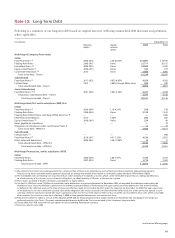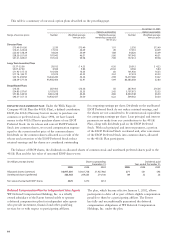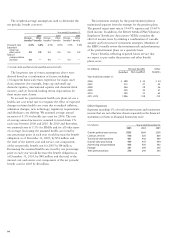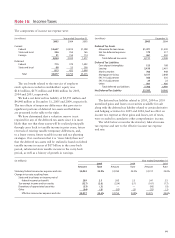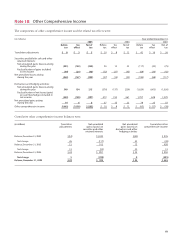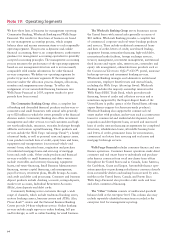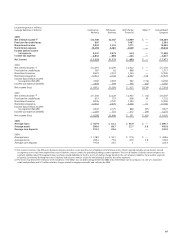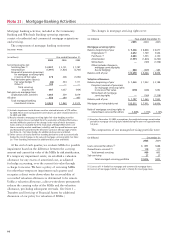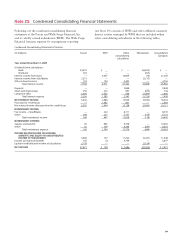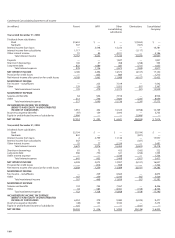Wells Fargo 2005 Annual Report Download - page 92
Download and view the complete annual report
Please find page 92 of the 2005 Wells Fargo annual report below. You can navigate through the pages in the report by either clicking on the pages listed below, or by using the keyword search tool below to find specific information within the annual report.
90
(in millions) Year ended December 31,
2005 2004 2003
Outside professional services $835 $669 $509
Contract services 596 626 866
Travel and entertainment 481 442 389
Outside data processing 449 418 404
Advertising and promotion 443 459 392
Postage 281 269 336
Telecommunications 278 296 343
Year ended December 31,
2005 2004 2003
Pension Other Pension Other Pension Other
benefits(1) benefits benefits(1) benefits benefits(1) benefits
Discount rate 6.0% 6.0% 6.5% 6.5% 7.0% 7.0%
Expected
return on
plan assets 9.0 9.0 9.0 9.0 9.0 9.0
Rate of
compensation
increase 4.0 — 4.0 — 4.0 —
(1) Includes both qualified and nonqualified pension benefits.
The weighted-average assumptions used to determine the
net periodic benefit cost were:
The long-term rate of return assumptions above were
derived based on a combination of factors including
(1) long-term historical return experience for major asset
class categories (for example, large cap and small cap
domestic equities, international equities and domestic fixed
income), and (2) forward-looking return expectations for
these major asset classes.
To account for postretirement health care plans we use a
health care cost trend rate to recognize the effect of expected
changes in future health care costs due to medical inflation,
utilization changes, new technology, regulatory requirements
and Medicare cost shifting. We assumed average annual
increases of 9.5% for health care costs for 2006. The rate
of average annual increases is assumed to trend down 1%
each year between 2006 and 2010. By 2010 and thereafter,
we assumed rates of 5.5% for HMOs and for all other types
of coverage. Increasing the assumed health care trend by
one percentage point in each year would increase the benefit
obligation as of December 31, 2005, by $52 million and
the total of the interest cost and service cost components
of the net periodic benefit cost for 2005 by $4 million.
Decreasing the assumed health care trend by one percentage
point in each year would decrease the benefit obligation as
of December 31, 2005, by $48 million and the total of the
interest cost and service cost components of the net periodic
benefit cost for 2005 by $4 million.
Other Expenses
Expenses exceeding 1% of total interest income and noninterest
income that are not otherwise shown separately in the financial
statements or Notes to Financial Statements were:
(in millions) Pension benefits Other
Qualified Non-qualified benefits
Year ended December 31,
2006 $ 288 $ 24 $ 54
2007 315 27 55
2008 366 28 56
2009 329 34 57
2010 339 33 62
2011-2015 1,986 158 313
The investment strategy for the postretirement plans is
maintained separate from the strategy for the pension plans.
The general target asset mix is 55–65% equities and 35–45%
fixed income. In addition, the Retiree Medical Plan Voluntary
Employees’ Beneficiary Association (VEBA) considers the
effect of income taxes by utilizing a combination of variable
annuity and low turnover investment strategies. Members of
the EBRC formally review the investment risk and performance
of the postretirement plans on a quarterly basis.
Future benefits, reflecting expected future service that
we expect to pay under the pension and other benefit
plans, were:



